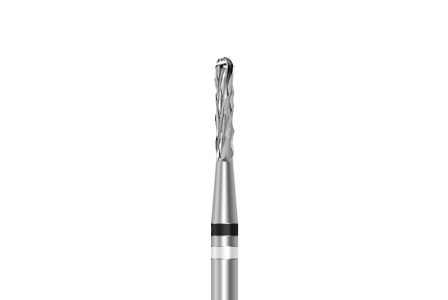

The Benefits of Using Coarse and Fine Grit Diamond Burs for Tooth Preparation.
Introduction:
When it comes to tooth preparation in dentistry, the choice of Dental burs plays a crucial role in achieving optimal results. In this blog, we will explore the benefits of using both coarse and fine grit diamond burs for tooth preparation. By understanding the advantages of each type of bur and how they complement each other, dental professionals can enhance their restorative procedures and ensure patient satisfaction.
1. Coarse Grit Diamond Burs (Green band 107-181 Micron) for Initial Tooth Preparation:
Coarse grit diamond burs are commonly used for the initial stages of tooth preparation. They offer several benefits, including:
a. Efficient Material Removal: Coarse grit diamond burs are designed to remove tooth structure quickly and efficiently. Their abrasive nature allows for rapid reduction of enamel and dentin, facilitating the creation of the desired tooth shape and contour.
b. Enhanced Visibility: The coarse grit of these burs creates visible grooves and marks on the tooth surface, aiding in the visualization of the preparation boundaries. This visibility helps dentists ensure accurate and precise tooth reduction, minimizing the risk of over-preparation.
c. Reduced Heat Generation: Coarse grit diamond burs generate less heat compared to other bur types, such as carbide burs. This reduced heat production helps to minimize the risk of thermal damage to the tooth structure and surrounding tissues.
2. Fine Grit Diamond Burs (Red band 27-76 Micron) for Refining and Finishing:
After the initial tooth preparation with coarse grit diamond burs, the use of fine grit diamond burs is essential for refining and finishing the preparation. The benefits of using fine grit diamond burs include:
a. Smooth Surface Preparation: Fine grit diamond burs create a smooth and polished surface on the prepared tooth structure. This smoothness is crucial for achieving optimal bonding between the tooth and restorative materials, such as composite resin or dental cement.
b. Precise Margin Definition: Fine grit diamond burs allow for precise margin definition, ensuring well-defined preparation margins for restorations. This precision is crucial for achieving accurate fit and sealing of the final restoration, minimizing the risk of microleakage and recurrent decay.
c. Enhanced Aesthetics: The use of fine grit diamond burs helps to create a natural and aesthetically pleasing tooth preparation. The smooth and polished surface achieved with these burs contributes to the seamless integration of restorations, enhancing the overall appearance of the final result.
3. Proper Technique and Considerations:
When using both coarse and fine grit diamond burs for tooth preparation, it is important to follow proper technique and considerations:
a. Water Cooling: Proper water cooling is essential to prevent overheating of the tooth structure and the bur. Water spray or air-water spray should be used during the preparation process to ensure adequate cooling and lubrication.
b. Bur Selection: Dental professionals should choose diamond burs with appropriate grit sizes for the specific tooth preparation requirements. Coarse grit burs are typically used for initial reduction, while fine grit burs are used for refinement and finishing.
c. Bur Maintenance: Regular cleaning and sterilization of diamond burs are crucial to maintain their cutting efficiency and longevity. Burs should be inspected for wear and tear, and replaced when necessary.
Conclusion:
The use of both coarse and fine grit diamond burs in tooth preparation offers numerous benefits for dental professionals. Coarse grit burs efficiently remove tooth structure, provide enhanced visibility, and reduce heat generation. Fine grit burs, on the other hand, refine the preparation, create a smooth surface, and ensure precise margin definition. By incorporating both types of burs into their restorative procedures and following proper technique and considerations, dental professionals can achieve optimal results, enhance bonding, and provide aesthetically pleasing restorations for their patients.



